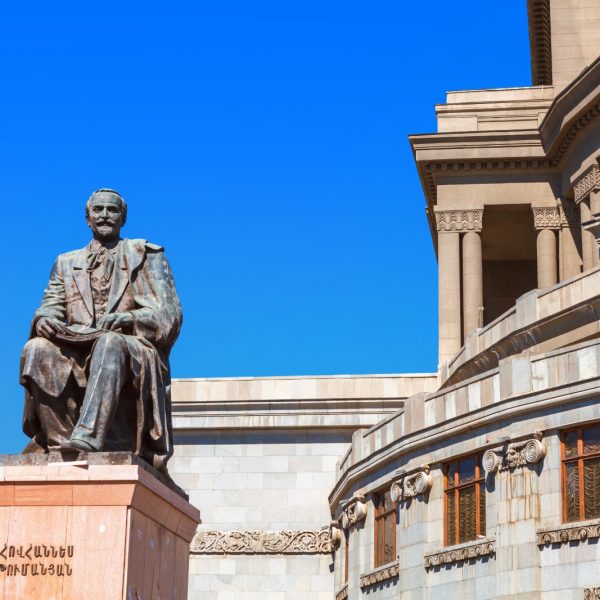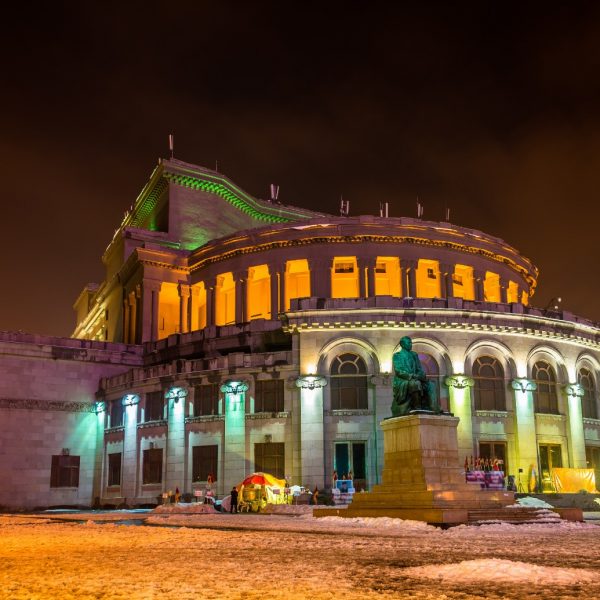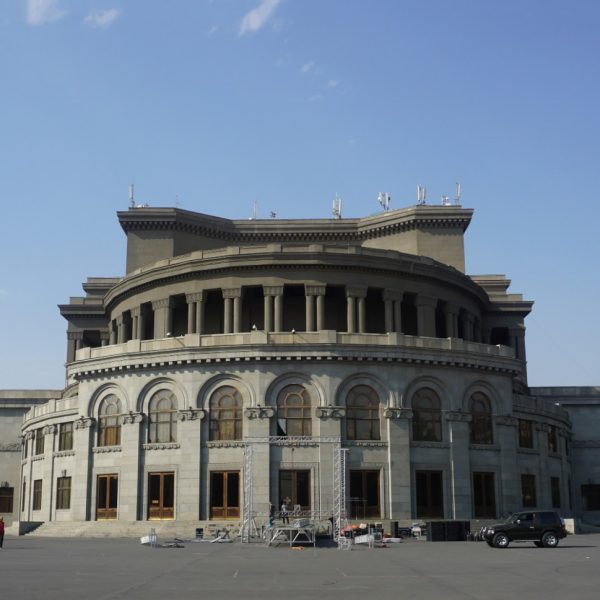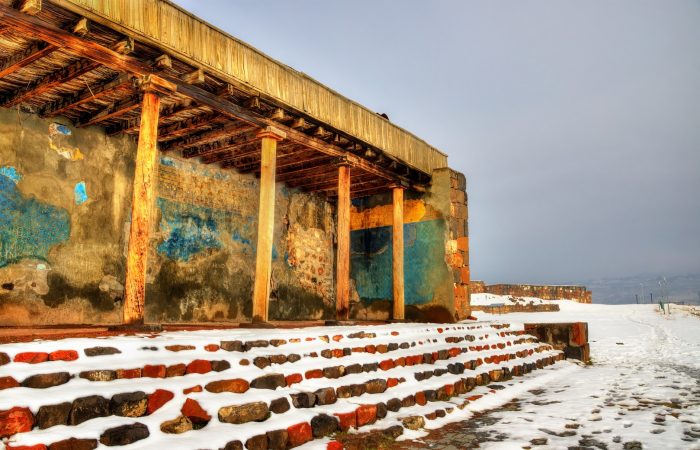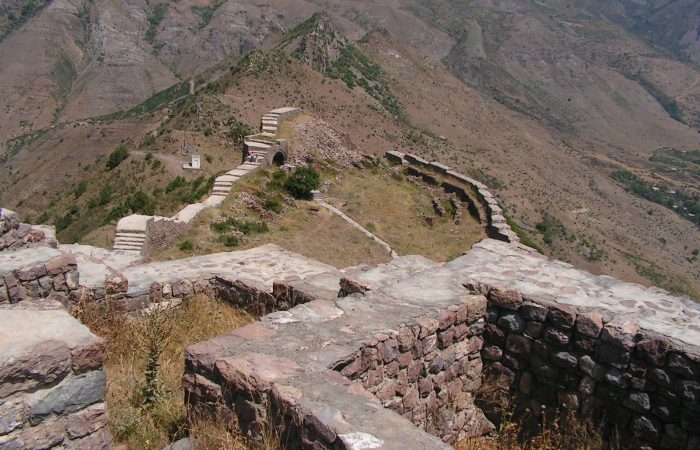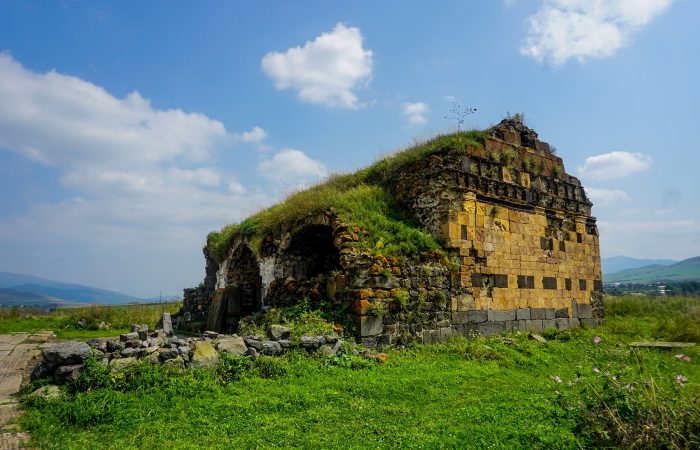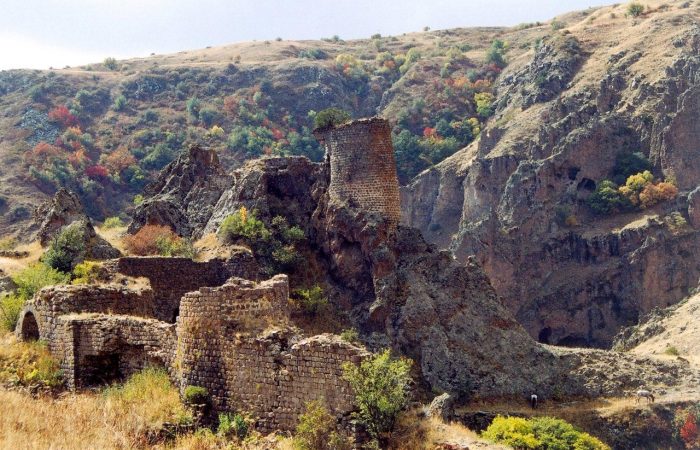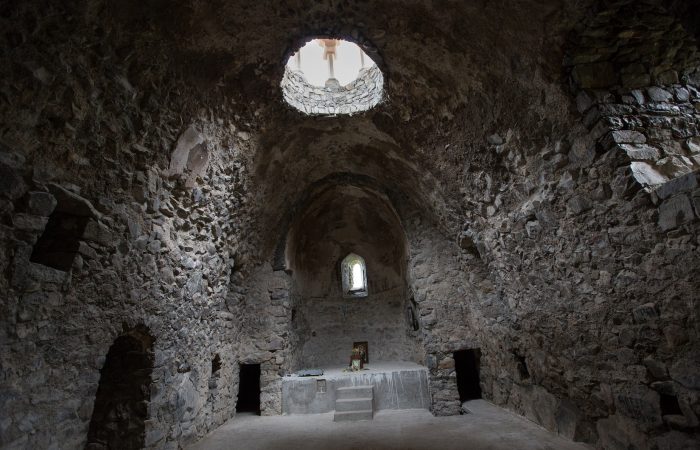Opera House Construction
The ground-breaking of the Opera Theater took place on the tenth anniversary of the Soviet Armenia, November 28, 1930. The building was opened on January 20, 1933. Soon after that, a ballet troupe was established.
The building was designed by renowned Soviet architect Alexander Tamanian. It initially combined two auditoria within one building with one roof over the stages. Both halls of the Opera house, the Aram Khachaturian Concert Hall and the Alexander Spendiarian Opera and Ballet National Academic Theater come shaped like amphitheaters both featuring perfect acoustics. Notably, the Aram Khachaturian Concert Hall was built by Tamanian’s son Georgy. Georgy undertook his father’s works after his death. The Aram Khachaturian Concert Hall can receive up to 1400 people, while the Opera and Ballet Theater – up to 1260 people.
In 1940 the second phase of the construction based on Tamanian’s design was completed under Tamanian’s son’s supervision. The building was finally completed in 1953 after large-scale construction works were launched.
First Operas Performed at Opera House
The Theater was officially opened on January 20, 1933. Soon after, the ballet troupe was established.
Almast Opera — The first opera performed there was Almast, the only opera by composer Alexander Spendiarian. The pre-history of the opera is as follows: the opera was created due to the encounter between Spendiarian and Armenian most beloved poet and writer Hovhannes Tumanyan. It took place in 1916. Tumanyan offered three of his poems, “Anush,” “Parvana” and “The Siege of the Tmbouk Castle,” as themes for a national Armenian opera. Spendiarian especially loved the last one and was deeply captured by its beauty. In particular, Spendiarian got much interested in Firdousi’s poem in the banquet scene, by Tatoul’s nightmare and by Almast dreaming of the throne.
Being Russian-Armenian Spendiarian started studying Armenian folk music. As the composer later said, he composed much of the opera’s instrumental passages based on Nikoaghayos Tigranian’s music. The libretto was to be written by Tumanian but because of too much work he had to give up on that. The libretto was written by Russian poetess Saphy Parnok. It was completed in 1916. Afterward, Spendiarian started working on the opera. The vocal score was finished in 1923. The composer worked on the instrumentation until his death. Nevertheless, he didn’t manage to complete the instrumentation of the fourth act.
This opera was chosen for the inauguration. In 1938 the theater was named after Alexander Spendiarian. It’s noteworthy that every season was being traditionally inaugurated with an opera by Spendiarian.
Anush Opera — Originally composed in 1912 Anush opera is a five act opera by Armenian composer and conductor Armen Tigranian based on Hovhannes Tumanyan’s homonymous poem. The opera was performed at the Opera House in 1935. Anush opera depicts a tragic love story of a village girl Anush who falls in love with shepherd Saro. One evening Anush’s brother Mossy and Saro fight in a wrestling match, in which Saro does not let Mossy win that way violating the local code of honor. As a result, Mossy shoots Sarodead; Anush gets insane and throws herself from a cliff.
This opera carries special significance for Armenian musical history and in all probability, is the most popular Armenian musical and theatrical work. It’s the first opera that was completely inspired by Armenian culture and folk music.
David Bek Opera — David Bek was first performed in 1950. Composed by Armen Tigranian, it is based on renowned Armenian author Raffi’s novel David Bek. It describes the events dating back to the 18th century when Armenians were struggling against Persia.
The opera’s libretto was written by A. Ter Hovhannisyan. The composer didn’t manage to complete the opera. It was completed by Levon Khoja-Eynatov and Budaghyan.
First Ballets Performed at Opera House
The first ballet performed at the Opera House was Swan Lake on January 6, 1935. The ballet was such a success that it gave rise to the idea of the National Ballet. In this regard, the first Armenian ballet “Happiness” was composed by Aram Khachaturian. It was first performed in 1939. Afterward, the composer created Gayane Ballet, which was actually based on the former. It initially depicted a young Armenian woman whose patriotic convictions and personal feelings clash upon discovering her husband’s treason. Later the plot was modified several times.
Gayane Ballet became a real success and was later performed in such countries as France and Germany.
Aram Khachaturian Hall and Armenian Philharmonic Orchestra
Presently, the Aram Khachaturian Hall is the home of the Armenian Philharmonic Orchestra, formed around 80 years ago. The over one-hundred piece ensemble weekly performs concerts in the Khachaturian Hall. One thing that makes the orchestra stand out is the fact that all its members are Armenian-born.
The Philharmonic Orchestra was led by Valery Gergiev in the past, and such famous artists premiered their works with this orchestra like Dmitry Shostakovich and Aram Khachaturian.
In 1989 Loris Tjeknavorian was appointed the orchestra’s Artistic Director and Principal. He was the first overseas artist who held a full time post in the ex-Soviet Union.
The Orchestra was led into the new millennium by Eduard Topchjan who made his debut with the orchestra in 2000. In the same year he was appointed the Artistic Director and Principal conductor of the Armenian Philharmonic Orchestra.
Monuments around the Opera House
Around the opera house there is a spacious square featuring monuments to prominent Armenian composers Aram Khachaturian and Alexander Spendiarian and Armenian poet and public figure Hovhannes Tumanyan. The monuments to Hovhannes Tumanyan and Alexander Spendiarian are placed in front of the Theater, on the left and on the right, respectively.
Not so far from the Opera House the monument to another outstanding Armenian composer and pianist, Arno Babajanian, can be found.
So far over 200 operas and ballets by Armenian, West European and Russian composers have been performed at the National Opera and Ballet Theater. The theater’s company, in its turn, has performed in over 20 countries, including Spain, the USA, Lebanon, Germany and so on. The names of such singers like Gohar Gasparyan, Mihran Erkat, Nar Hovhannisyan, Tatevik Sazandaryan, conductors like Konstantin Saradjev, Aram Katanyan, Yuri Davtyan, ballet masters Vanush Khanamiryan, Vilen Galstyan, painters Minas Avetisyan and Martisros Saryan are on the list of people who have worked in the theater and contributed to its success and prosperity. With their presence these people simply make that list sparkle, since they are one of the most outstanding people of the 20th century Armenian culture and opera and ballet life.
The theater has hosted the concerts of such renowned artists like Charles Aznavour, Akvarium and Ian Anderson.
In 1956 the theater received the National Academic and Ballet Theater status, and throughout the years it has gained international recognition for its excellent acoustic qualities.
Eventually, since its creation the Opera House has never ceased amazing and enchanting people with its unique architectural solutions and basically, with its delightful appearance. It’s beautiful and it worthily is one of the best accomplishments of the age-long history of the Armenian people.
Location
The Opera House is located on Tumanyan Street, in the heart of Yerevan, and is within a few minutes’ walk from the Northern Avenue, Cascade and the Republic Square.

